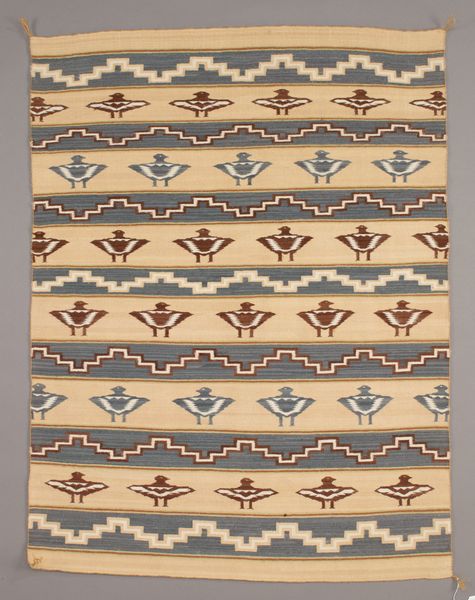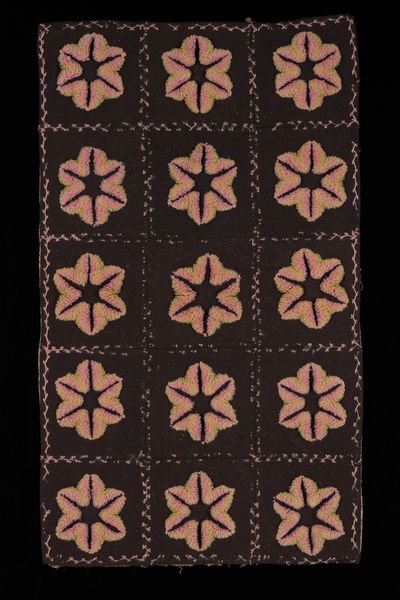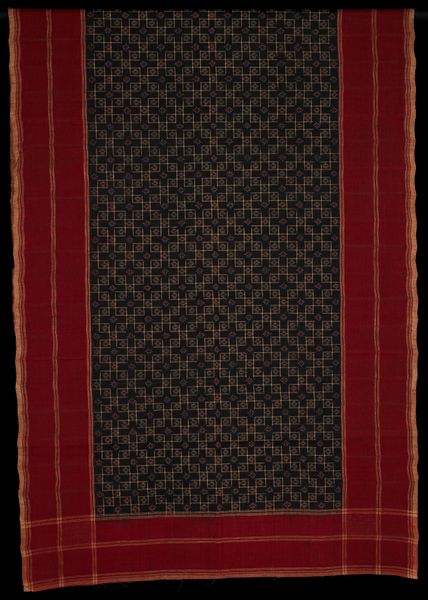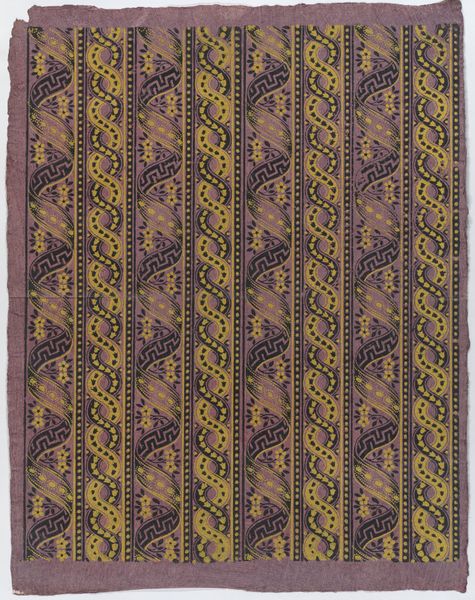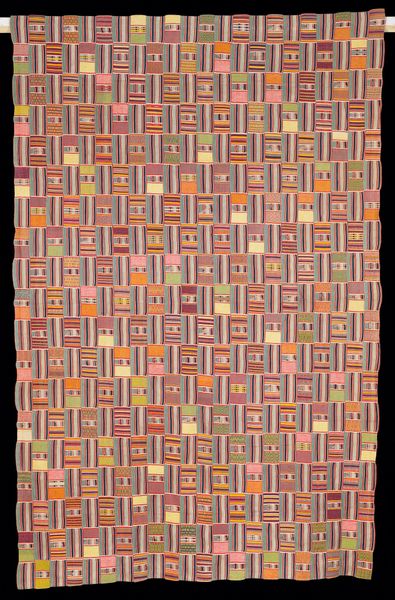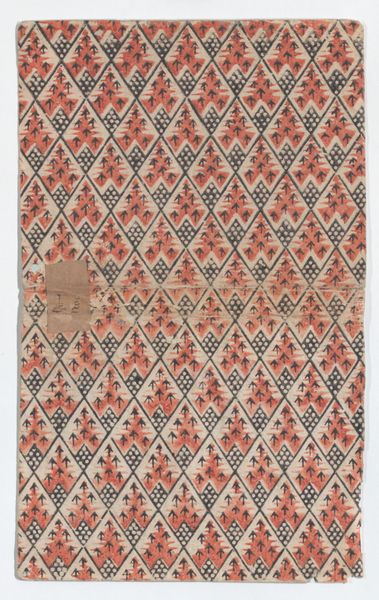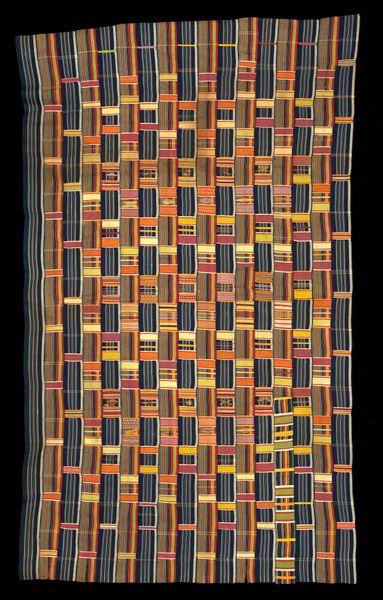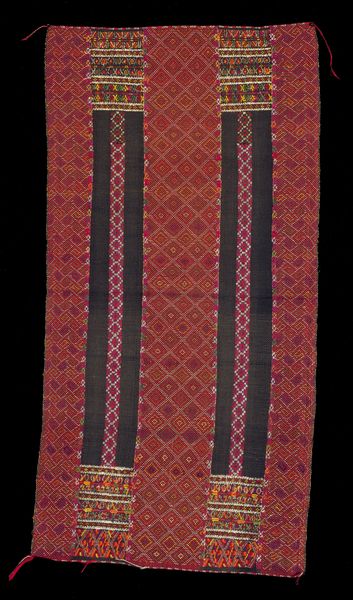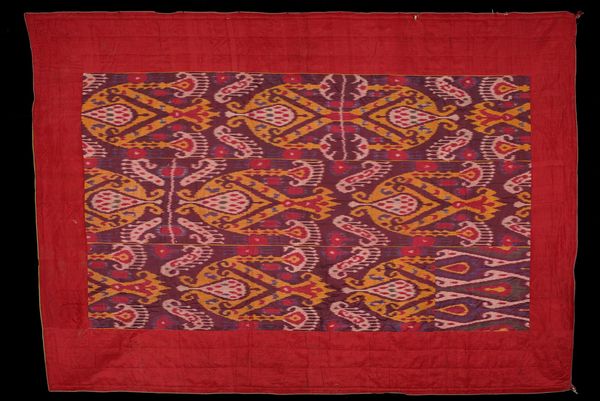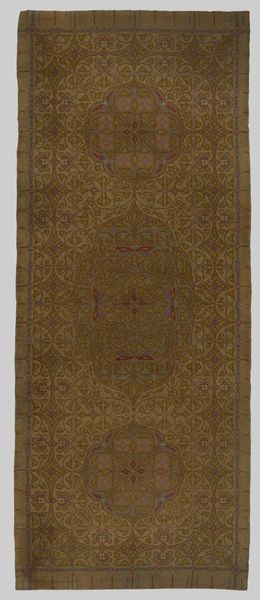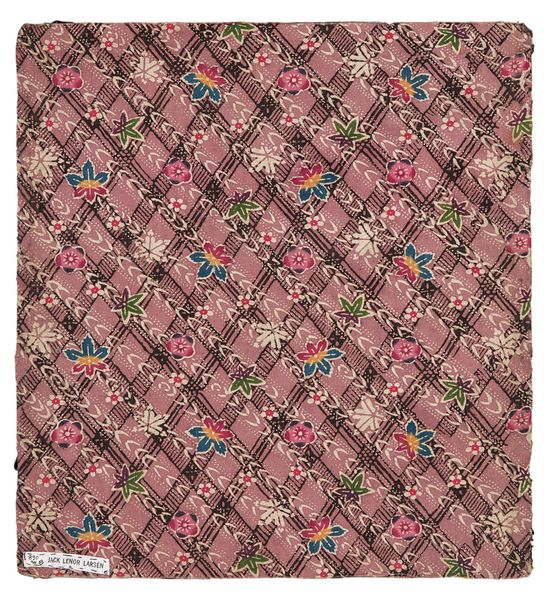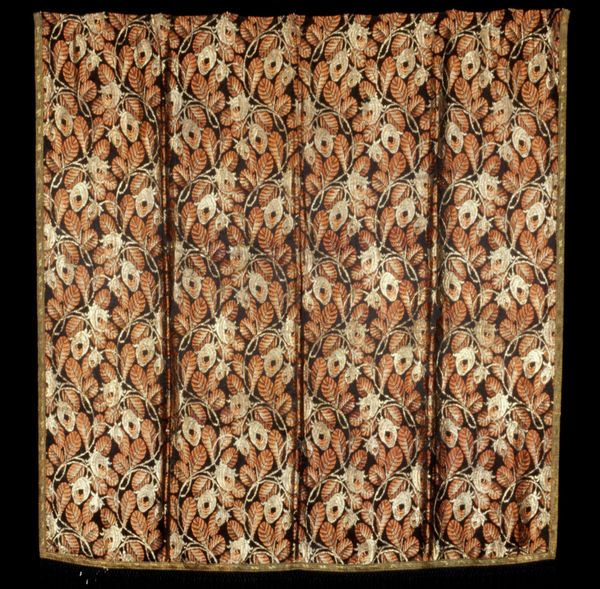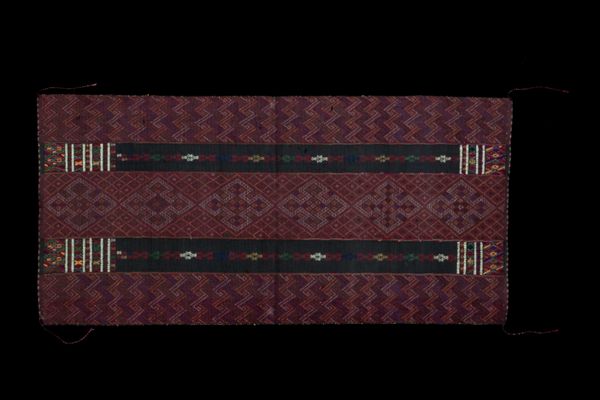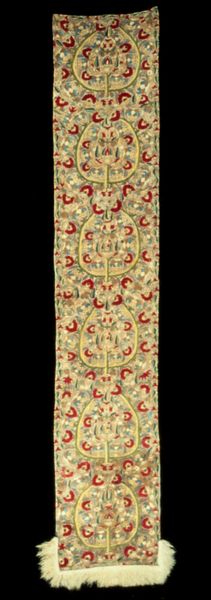
weaving, textile
#
weaving
#
textile
#
geometric pattern
#
geometric
#
indigenous-americas
Dimensions: 40 3/4 x 38 3/16 in. (103.51 x 97 cm)
Copyright: Public Domain
This tunic was woven by the Wari people of Peru, using camelid fibers, probably from alpacas or llamas. The Wari dominated the area for 500 years, from 600 to 1100 CE. The geometric designs you see here are typical of Wari textiles. These patterns weren't just decorative; they likely held symbolic meaning, perhaps related to social status or religious beliefs. Creating a textile like this was incredibly labor-intensive. From raising the animals, to shearing them, spinning the fibers into yarn, dyeing the yarn, and finally weaving it all together. The level of skill needed to create this is immense. The process was a significant investment of time and resources, and it was a social activity as well. Textiles were a form of currency and tribute, showing the wealth and power of the Wari empire. This tunic isn't just clothing; it's a window into a complex society. It blurs the line between art, craft, and economics.
Comments
minneapolisinstituteofart almost 2 years ago
⋮
In ancient Andean cultures including the Wari empire, clothing communicated much more than style; a ceremonial tunic like this was an object of great prestige. Its production required the cooperation of a large community of skilled individuals. Because it took so long to create, multiple weavers would often collaborate on a single piece. On close inspection, variations in weavers’ individual styles can be seen in the weave structure as well as the interpretation of the repeating pattern. Before the weavers could begin their work, several other professionals were required. Agricultural specialists bred the animals and cultivated the cotton. Applied chemists created a variety of distinctive, long lasting dyes. And finally, highly skilled spinners made a thread so consistent that even today’s most advanced machinery cannot duplicate it. The finished product symbolized the convergence of both the natural and human world—and for the elite wearer, it signified the ability to command these resources.
Join the conversation
Join millions of artists and users on Artera today and experience the ultimate creative platform.
